Spotted Lanternfly Identification & Control
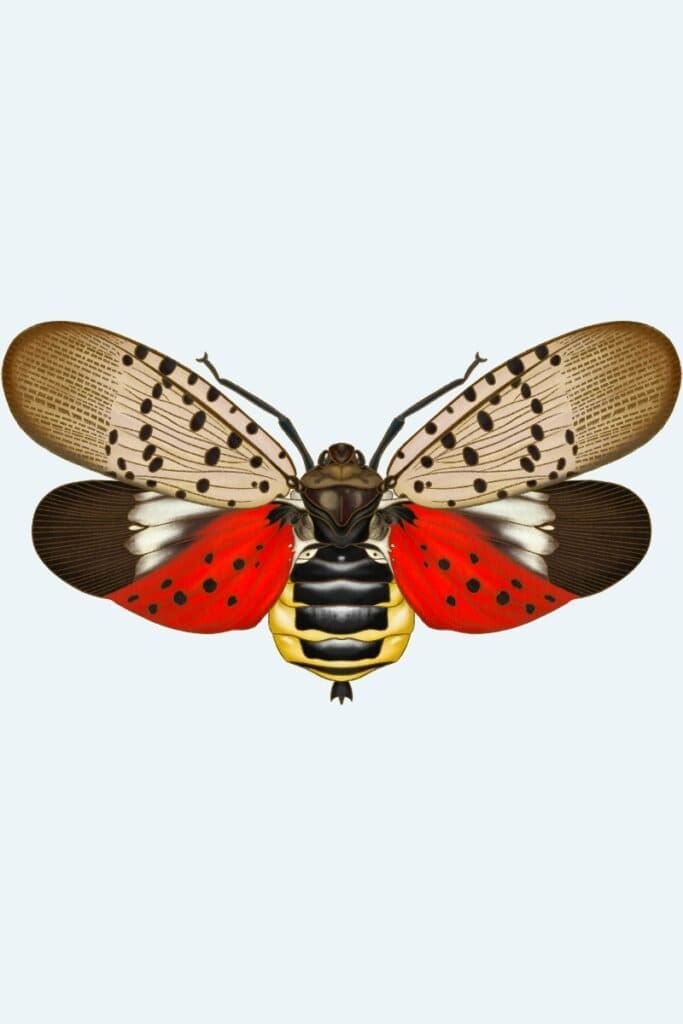
What Are Spotted Lanternflies?
The spotted lanternfly (Lycorma delicatula), commonly abbreviated as SLF, is an invasive species of planthopper closely related to cicadas and aphids.
Although SLFs are primarily a nuisance to people, they cause extensive damage by feeding on sap from trees and crops, with a preference for the Tree of Heaven (Ailanthus altissima). They pose a significant threat to agriculture in areas where they’ve spread, including New York, Pennsylvania, and other Northeastern states.
Effective management includes controlling host plants, setting traps, and utilizing professional pest control services to reduce their impact.
Appearance
Adult spotted lanternflies have six legs, oval bodies, and two pairs of wings. In contrast, their nymphs are wingless and pear-shaped. Their bright colors and distinct markings make them easily identifiable throughout their life stages.
Behavior
While spotted lanternflies prefer the Tree of Heaven, they can feed on over 70 plant species, including important crops like grapes, hops, and various hardwood trees.
Females can lay up to 50 eggs at a time, leading to rapid population growth. These eggs are laid in clusters and covered with a waxy, mud-like coating, which allows them to survive through the winter on tree trunks, outdoor furniture, vehicles, and other hard surfaces.
Risks
Though SLF feeding does not immediately kill plants, it significantly weakens them. Their excretion of a sugary substance called honeydew promotes the growth of sooty mold and attracts other pests.
Identification
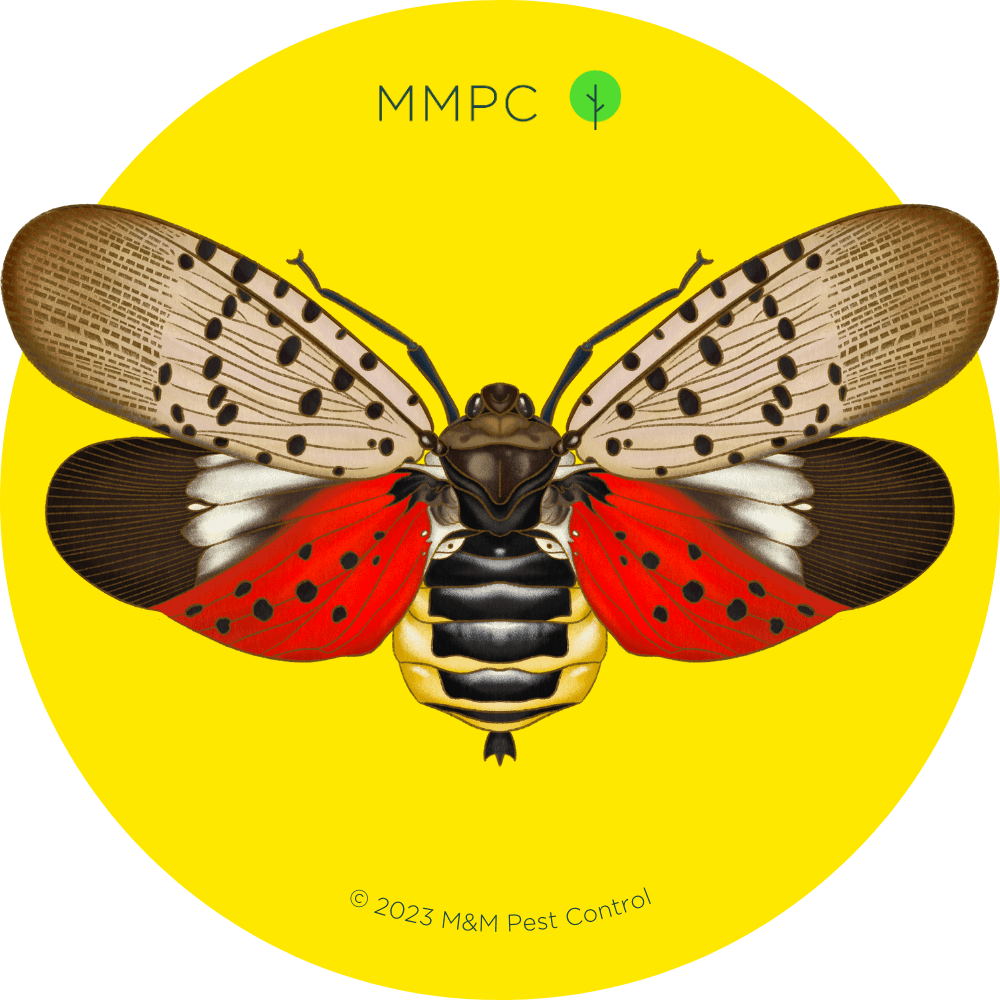
Adult Spotted Lanternfly
Adult lanternflies have oval-shaped bodies with six long legs and distinctive wings. They are commonly seen from July to December.
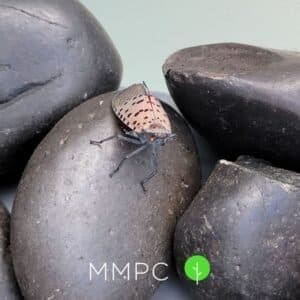
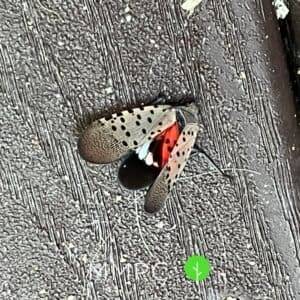
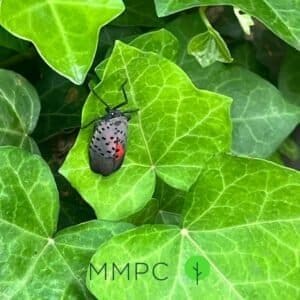
Size: 3/4″ – 1″ (19 – 25 mm)
Color: Black, red, yellow, and brownish-gray
Identifying Features:
- An oval-shaped, yellow abdomen with thick black stripes
- Brownish-gray forewings with black spots and rectangular markings
- Red and black hindwings with black spots and a white band
- Small, orange antennae
- 6 long, black legs
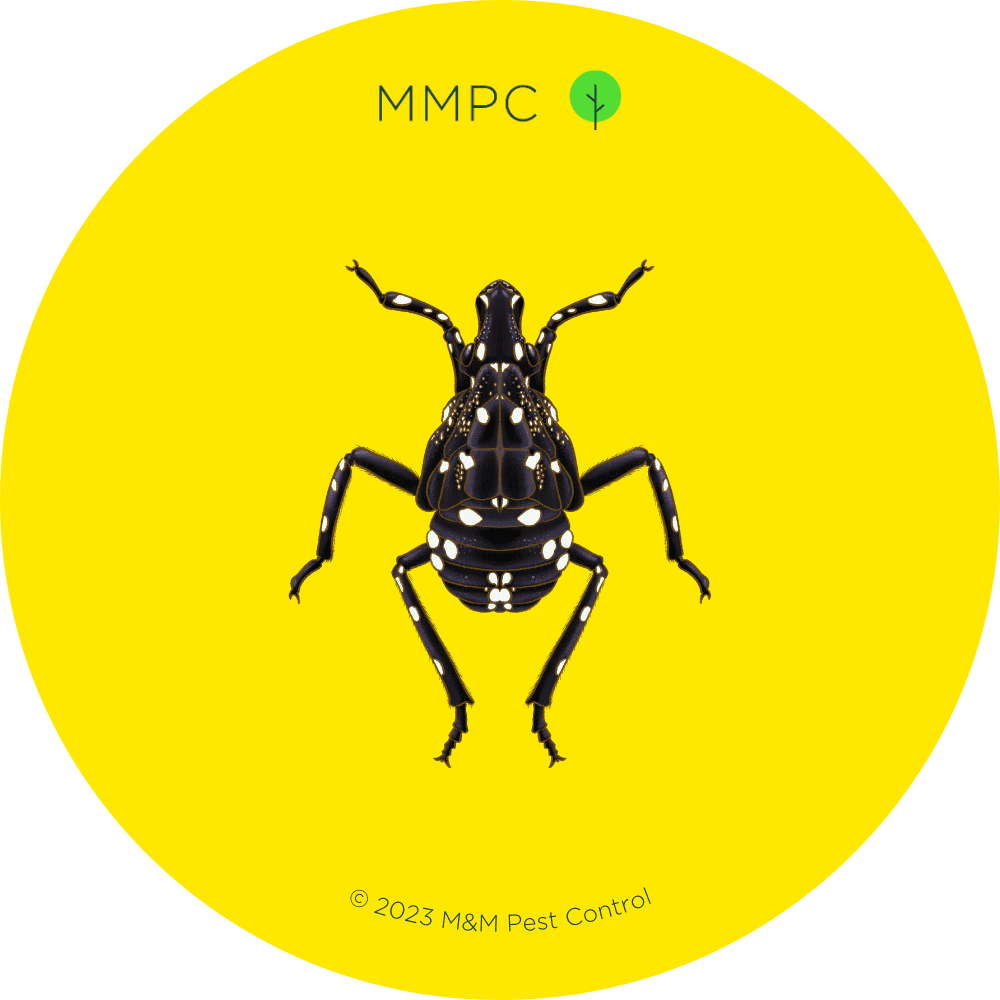
Early Nymph (1st to 3rd Instar)
Nymphs emerge in the spring and are frequently mistaken for ticks. The first three instar stages are typically seen from May to July.
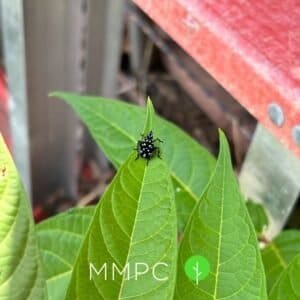
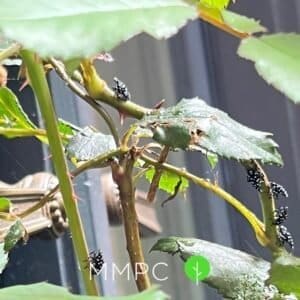
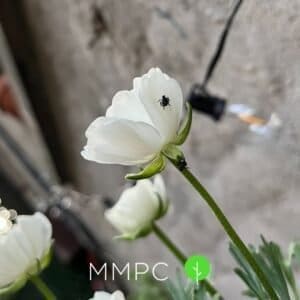
Size: 1/8″ – 1/2″ (4 – 12 mm)
Color: Black with white spots
Identifying Features:
- A black, pear-shaped body covered in white spots
- A prominent snout
- 6 long, black legs with white spots
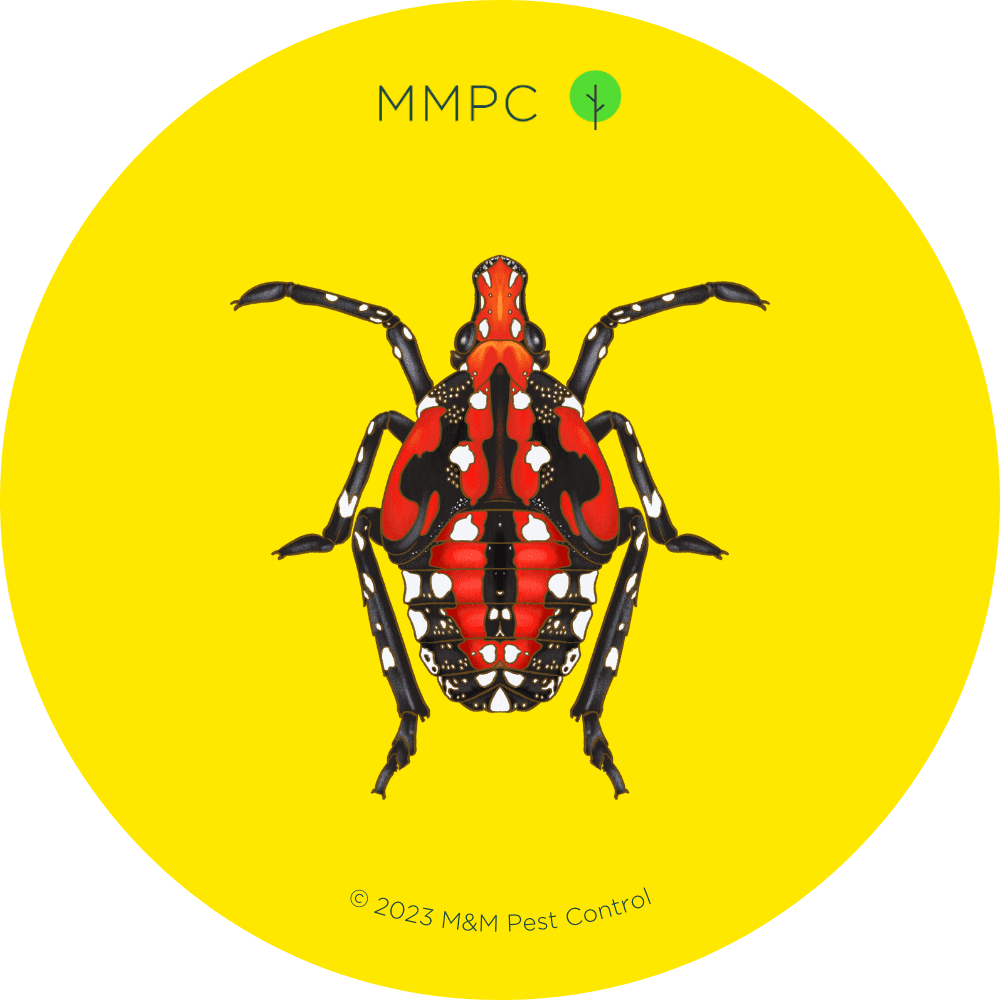
Late Nymph (4th Instar)
The fourth instar stage is usually seen from July through mid-August. This is the final nymphal form before the insect molts into its adult form.

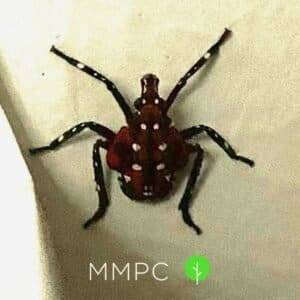
Size: 1/2″ – 3/4″ long (12 – 19 mm)
Color: Black, red, and white
Identifying Features:
- A black, pear-shaped, body with red patches and white spots
- A prominent snout
- 6 long, black legs with white spots
Control
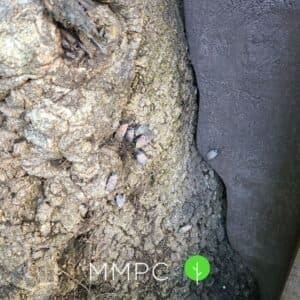
How to Get Rid of Spotted Lanternflies
The most effective way to kill SLFs is by directly stomping on them or trapping them in a bottle, as they tend to jump into containers when startled. Once trapped, ensure that they are killed before disposal.
Traps
Traps are another effective, non-chemical method to control SLFs. Circle traps are recommended as they minimize harm to non-target species. To create a circle trap:
- Cut the tops off two plastic jugs to create a funnel and tape them together.
- Attach a plastic-coated insect screen over the funnel using duct tape.
- Secure the trap to a tree at a height of 4–5 feet.
Regularly check and replace the collection bag or container as needed.
Insecticides
Contact insecticide sprays are useful for killing SLFs when they are visible and can be targeted directly, particularly on the lower parts of trees and other surfaces where they congregate. While sprays are a good option for immediate control, they do not provide long-term protection.
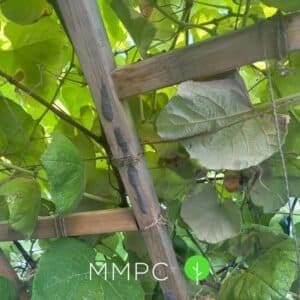
Removing Egg Masses
Removing egg masses during the fall and winter is critical for preventing nymphs from hatching in the spring. This is one of the most effective ways to control SLF populations.
Egg masses are typically found on host plants and hard surfaces like outdoor furniture and vehicles. Since insecticides are ineffective on eggs, manual removal is necessary.
- Look for mud-like patches on trees, outdoor furniture, or vehicles.
- Scrape egg masses into a plastic bag with hand sanitizer or rubbing alcohol, seal the bag, and dispose of it properly.
FAQs
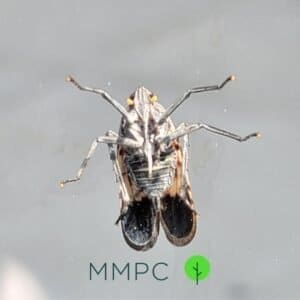
Do Spotted Lanternflies Bite?
No, spotted lanternflies do not bite or sting. Their piercing-sucking mouthparts are designed to feed on plant sap and are not capable of penetrating human or animal skin.
Why Are Spotted Lanternflies Bad?
Spotted lanternflies harm plants by feeding on their sap and excreting honeydew, which attracts other pests and promotes sooty mold growth. Their ability to spread quickly makes them a serious threat to crops like grapes and fruit trees, as well as hardwood forests.
Our Services
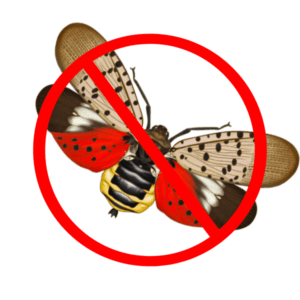

Need help getting rid of spotted lanternflies? Talk to one of our pest experts today.


